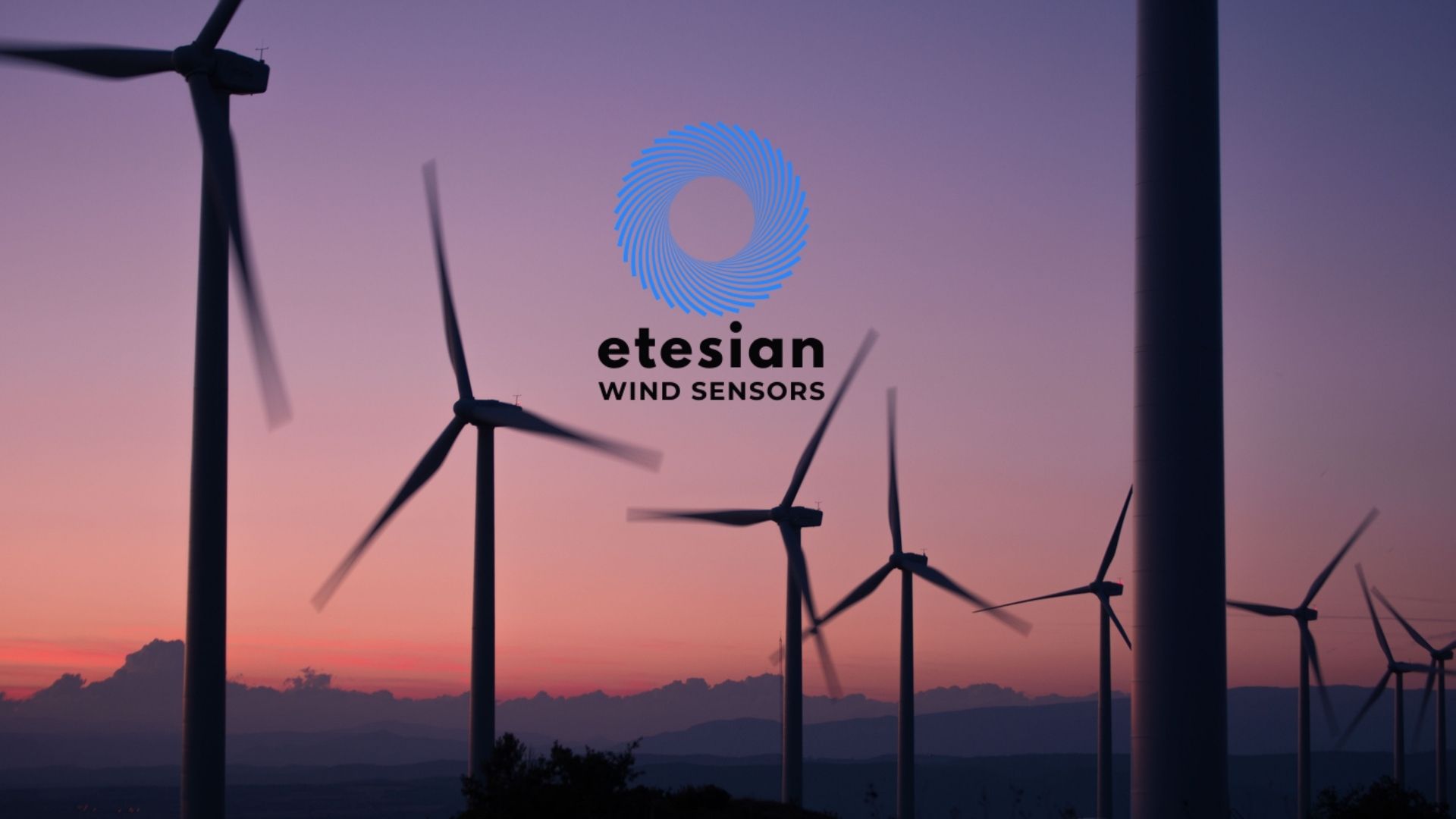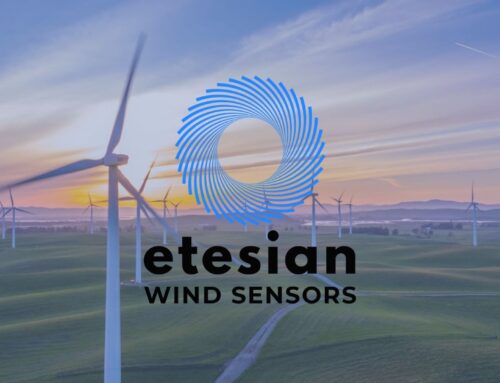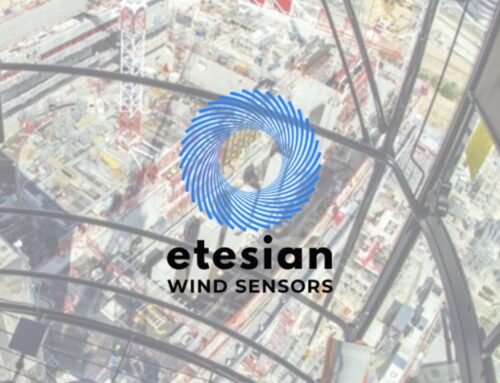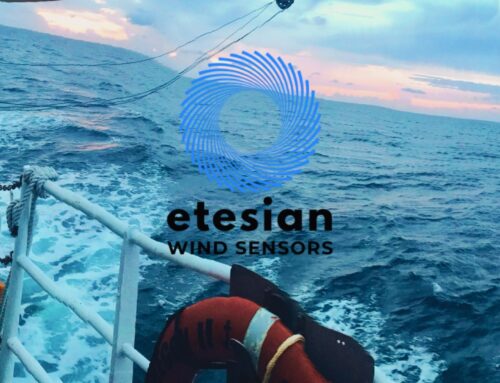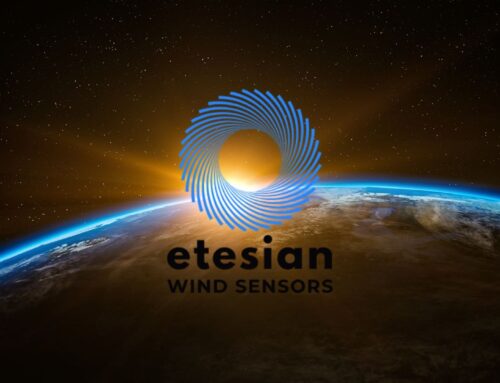Is your wind turbine operating as intended? Is it producing the power that the manufacturer claims it should? Is it regulating properly so that if a storm passes through, you know it won’t self-destruct or burn out the generator and inverter? The only real way to determine all of this is to measure both the turbine power and the wind speed. If you don’t measure the wind speed you are only guessing.
Etesian’s wireless self-powered anemometer makes it especially easy to retrofit an anemometer to an existing wind turbine. Perhaps you already have the wind turbine installed at your home or business and didn’t install an anemometer when the turbine went up. To add a conventional anemometer would require running the anemometer signal cable from the wind turbine tower back to the garage or control shed where the turbine controls are located. With a wireless wind sensor the hassle and expense of trenching, laying conduit, and pulling a cable is eliminated. All that’s needed with our wireless, wind-powered wind sensor is to install a short boom mounted to the side of your existing wind turbine tower with the cup anemometer installed on it.
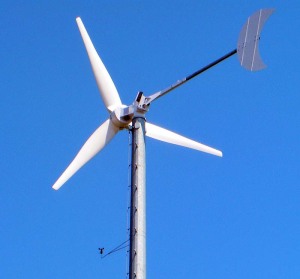
The Etesian wireless, wind-powered wind sensor can be seen on the boom below the blade of the wind turbine.
Secondly, you need a means to measure and record the turbine power. Etesian provided a system a few years back to Black Island Wind Turbines (http://www.blackislandwindturbines.com). Their 3 kW HR3 turbine was being evaluated by the DOE. The DOE had contracted with an independent test facility – the Alternate Energy Institute (AEI) at West Texas A&M University (WTAMU) in Canyon. This particular turbine generated 24 VDC and was fed thru a grid tied inverter back to the local utility.
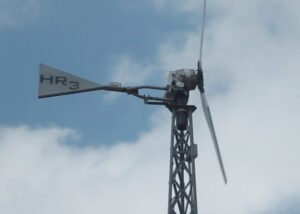
HR3 Turbine installed at AEI, WTAMU, Canyon, TX
The generator voltage was held at 27.6 volts, as it was feeding a very small battery bank consisting of two automotive type L-A float batteries. All that was needed to measure the turbine output was to measure the DC current fed to the battery bank and inverter. For that purpose Etesian provided one of its wind data loggers with an analog input option, the current measurement being made with a Hall Effect “CT.”

FW Bell Hall Effect Current Transducer
With the self-powered wireless anemometer sensor sending data from a few hundred feet away, and the current transducer feeding the generator current signal to the logger, everything that was needed to graph power vs. wind speed was in place. The Etesian logger receives wind measurements from the wireless sensor once per second, and it samples the analog voltage input once per second. If you plotted the one second data you would have a huge amount of scatter in the plot as gusting winds change velocity quickly and the rotating mass of the wind turbine responds much more slowly to these changes. Typically the data is averaged over a time period and this is exactly what the Etesian logger does. It can be configured to take the one second samples of wind and power and create one minute (or longer) averages along with other important measures in the averaging interval: the maximum, the minimum, and the standard deviation.
So, what’s a power curve look like, and what does it mean? As the wind blows harder, (up to a point) the power generated by a wind turbine increases. I guess this is obvious. No wind – no power, more wind – more power. At some point the turbine reaches the capacity of its electrical generator and something has to be done to regulate the torque from the blades driving the generator. Otherwise the generator will overheat and be toast. Not a good thing, and another important reason to want to be able to create a power curve for your turbine. Below is the power curve from the HR3 at AEI on October 28, 2013:
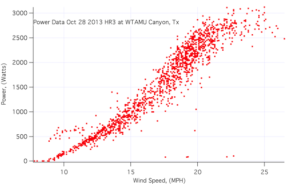
Contained on this scatter plot is a day’s worth of one minute averages. Each dot (and there are 24 hrs x 60 min/hr = 1,440 dots) is the logger’s average of the wind speed and the average of the turbine power for that one minute.
What’s interesting about this power curve is to note that at about 22 MPH the general increase of power with increasing wind speed stops. You can see that the curve flattens out and actually starts curving down – the power is going down with increasing wind. It’s too bad there were not higher winds that day. It would have been nice to see the graph filled in from 25 to say 35 or 40 MPH. But the point is, this turbine was regulating properly. You can visit Black Island’s site for details on their turbine and how it works.

